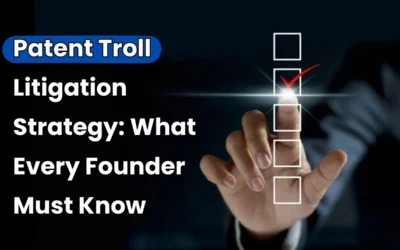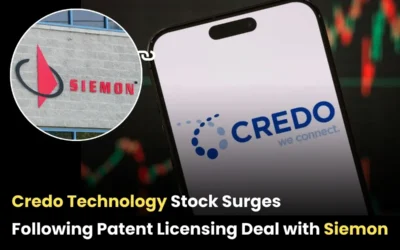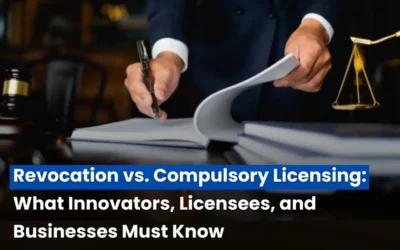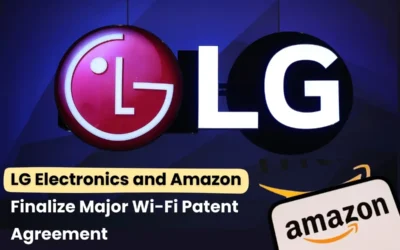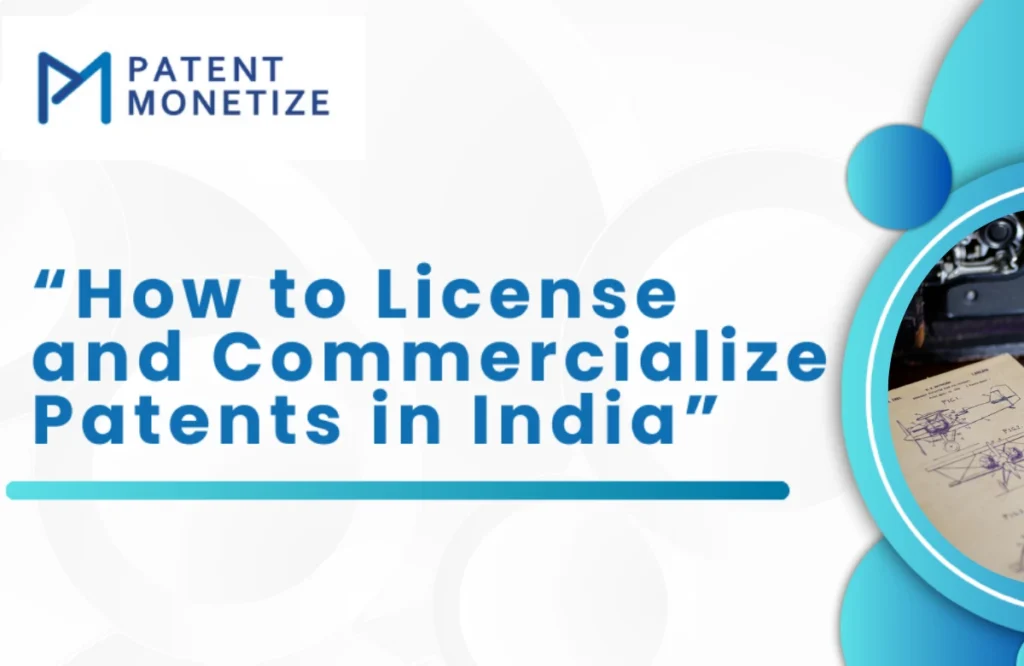
Critical assets for an inventor, start-up, or business would be patents and intellectual protection in this fast-changing space of intellectual properties around it. But far from getting that patent secured is where the real game is won licensability then becomes the centerpiece and further success is derived from eventual commercialization into the patented concept. Familiarity with the legal framework of countries, potential market opportunities, and strategies about License and Commercialize Patents would thus remain relevant to intellectual property valuation in India as it would for the rest of the world. This article will take you through the patent licensing process and eventual commercialization in India. From basic patent licensing procedures to the step-by-step procedures for ensuring your patent comes to its full potential, we have covered it all.
What is Patent Licensing?
This other type of process is known as Patent licensing procedure; here, any patent owner referred to the Licensor agrees on to allow, in light of license with anybody else or rather known as Licensee, make or sell inventions produced under application for Patents, made or owned. Patent license can either be Exclusive as well as non-exclusive as per their agreement. There are various types of Patent Licensing in India.
- Single Sole License : Right where no one can exploit patented technology and even to defend the patentee from licensing it to another.
- Non-Exclusive License: Patent can be granted to as many licensees as possible because they work over the patent with the licenser who retains rights in the patent to work on patent.
- Sub-License :This is the step in which the patentee gives or grants permission to the rights of licensing which such patented technology has, to other individuals.
How to License and Commercialize Patents in India?
How to license and commercialize your patent in India. The Step-by-Step Procedure are hereby given below that will guide on how to construct a successful plan.
1. Measure the Value of Your Patent
Value your patent before approaching the potential licensees. The market potential of your innovation, the technological novelty, and commercial practicability of your innovation will be used in negotiating licensing terms. These are often preceded by valuation techniques available through the following patent valuation methods:
- Income-based methods: Calculation of future income that the patent is expected to generate.
- Market-based methods: Comparison of similar patents available in the market.
- Cost-based approach: What is going to cost to make the invention?
2. Identification of Potential Licensees or Partners
Who the right licensee should be is one of the prime determinants of success with patent commercialization. High value in India is expected in pharmaceuticals, biotechnology, electronic electronics, and manufacturing sectors. Find licensees through networks at conferences of the industry, incubators, accelerators, or large corporate organizations in your field. Some of the most reliable leads sources at least for a potential partner will be: Industry partnerships Patent brokers are introduced to large companies in that industry, agencies, experts who are familiar with patent licensing Technology transfer offices University and research institute offices who might later work towards an invention’s commercialization.
3. License Agreement
The backbone of the license to win is a well-structured licensing agreement. The framework of the agreement should be strong enough to explicitly state the liabilities of both the licensor and the licensee. Important elements of the license agreement:
- Region/area/zone, etc: the term for which license extends
- Payment Plan: royalties, advances, or other types of payouts like payout due to achievement of milestones, etc
- Confidentiality and NonDisclosure Agreement
- performance milestones: Terms that include such as the licensee will achieve his required performance or sales targets.
- Dispute resolution mechanism: Comprising of how disputes would have to be settled.
4. Negotiate the Terms
You need to negotiate good terms with your licensee to obtain the maximum benefit in cash terms from your patent. Royalties, upfront payments, exclusivity, and performance milestones should be negotiated both ways. Negotiate for terms that would be appropriate, owing to your goals, with the help of patent attorneys or commercial advisors.
5. The Patent Licensing Agreement Must be Documented
Under the Patent Act in India, the Licensor himself is to get the exclusive license registered with the Indian Patent Office alone. Nonexclusive license need not be registered. In fact even to matters of disputes it would be very useful so that formal recognition of the rights of the licensee can be attained by getting them registered.
6. Supervise and Enforce License Agreement
The patent owner will realize that it is tracking the patent closely after licensing for applying the inventive development and also if the licensee is actually following the terms of the agreement. Providing one with this assurance that royalty money is being paid and proper use of invention will enable a patent owner to hold his patent to be well valued. Periodic audits and checks are done to adhere to the agreement.
Methods of Patent Commercialization in India
Indian patents besides licensing can be commercially exploited for patents through manufacture, joint venture, or technology transfer. These are the two routes that earn money for a patent.
1. In-house commercialization: You would manufacture and sell it if you could manage the resources and a proper setting for such production. Of course, that would be pretty capital-intensive and very skill-intensive, and then you would control all the steps of commercialization of the patent.
2. Joint Ventures: Now, under a joint venture, perhaps you, the other company along with your strengths, know-how, and some networking come together further making more potent efforts towards eventual commercialization of a patent.
3. Technology Transfer: Actually, the technology transfer would present the best available options for commercialization purposes for both universities and research organizations. The technology transferred to such industries that will be commercially exploiting it will assist the inventor in retaining ownership with having enjoyed the fruits of commercialization.
Conclusion
Patent Right The government gives a right to an inventor or assignee to make, use, sell or distribute a patented invention without his permission. Patentability In India, patents are granted by the Patent Office in view of the Patents Act, 1970. Under it, patents for inventions which are novel, nonobvious and industrially applicable are granted.Though it is also important to obtain a patent, it forms one side of the coin. In fact, commercialization forms part of the patent. Patent licensing and commercialization provide an inventor with the possible earning from his invention without its manufacture and subsequent sale by his own hand.





